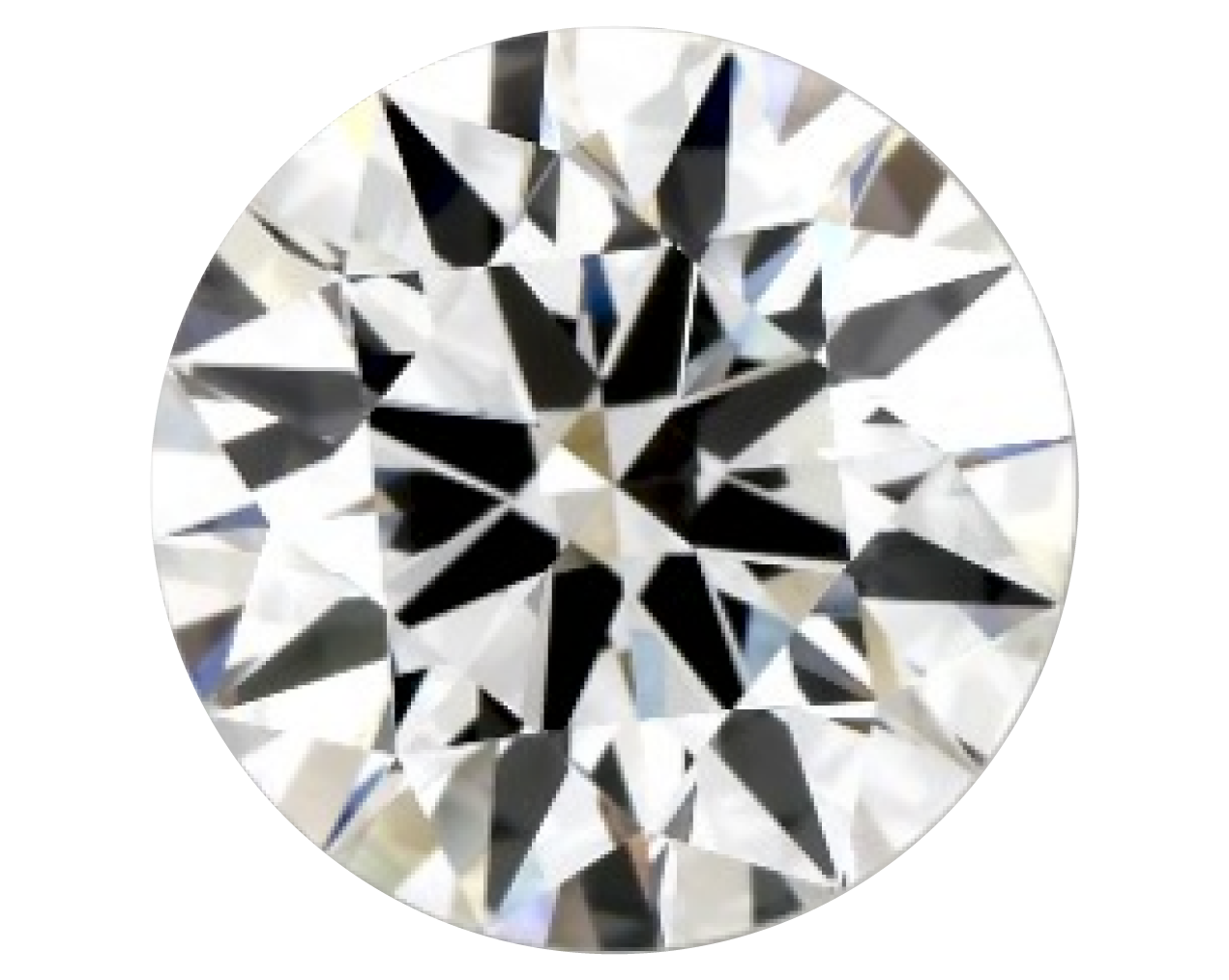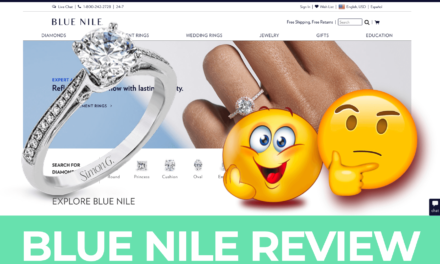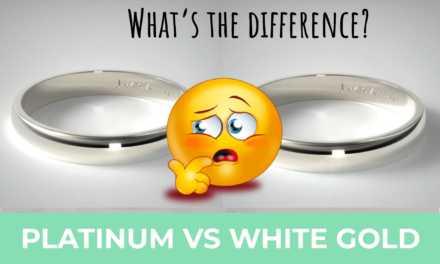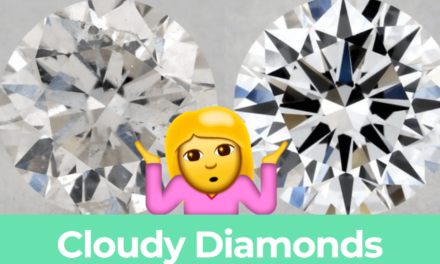My website is reader-supported. Buying through links on my site may result in me earning a CUSTOMER REFERRAL FEE at no extra cost to you.
Check out the latest deals at our top diamond vendor choice: James Allen
VS1 Diamonds – A good choice for an engagement ring?
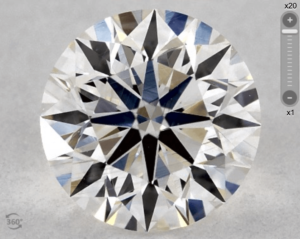
VS1 diamond, 1.01ct, G color, idela cut
When looking for an engagement ring, there are many things to consider. One of the most critical decisions is what type of diamond to get. Many people gravitate towards VS1 diamonds because they believe that they offer good value. But what is a VS1 clarity diamond exactly? And is it really the best choice for an engagement ring? So if you are thinking about purchasing a VS1 clarity diamond for your fiancee-to-be, then read on! In this blog post, we will explore these questions and more.
Content overview
- What is a VS1 diamond?
- Why a VS1 clarity diamond is not always eye clean (and how to find one that is)
- The difference between VS1 and VS2 clarity diamonds (and which one you should get)
- Where and how to find eye clean VS1 and VS2 diamonds
- Buying recommendations for small and large diamond sizes
- Final recommendations
VVS1 Diamond Summary
- VS1 stands for very slightly included indicating that the diamond will have minor inclusions or blemishes; however, those won’t be visible to the naked eye
- VS1 diamonds are often a better option than VVS or flawless diamonds, as they tend to be more budget-friendly
- However, in many cases, you should be able to find eye-clean diamonds in lower clarity grades, such as VS2, and save even more money
- The only time VS1 diamonds might be a good option is when you are considering diamonds above 2 carats or fancy shapes
- The best places to shop for VS1 or lower clarity grade diamonds are James Allen and Blue Nile
What is a VS1 diamond?
Before you can fully understand what VS1 clarity is, you need to have a basic understanding of the meaning of clarity as it refers to a diamond. It is how the diamond looks visually, whether it has any inclusions and flaws.
VS1 stands for “very slightly included diamonds”, which means that the diamonds have very slight inclusions. Any inclusions the diamond might have can hardly be seen under the standard 10x magnification loupe that jewelers use. That also means that it’s very unlikely that the inclusions in a VS1 diamond would be visible to the naked eye. That’s particularly true if the diamond is smaller than 2.0 carats and round cut.
As the carat weight of the diamond goes up, along with its size, you will be able to see more inclusions with the naked eye. That’s especially true if you choose certain fancy shaped diamonds, such as an emerald cut diamond.
Below 2 carat you are usually fine. However, there are exceptions. Look at the emerald cut diamond below if you want to see a poor example of VS quality.
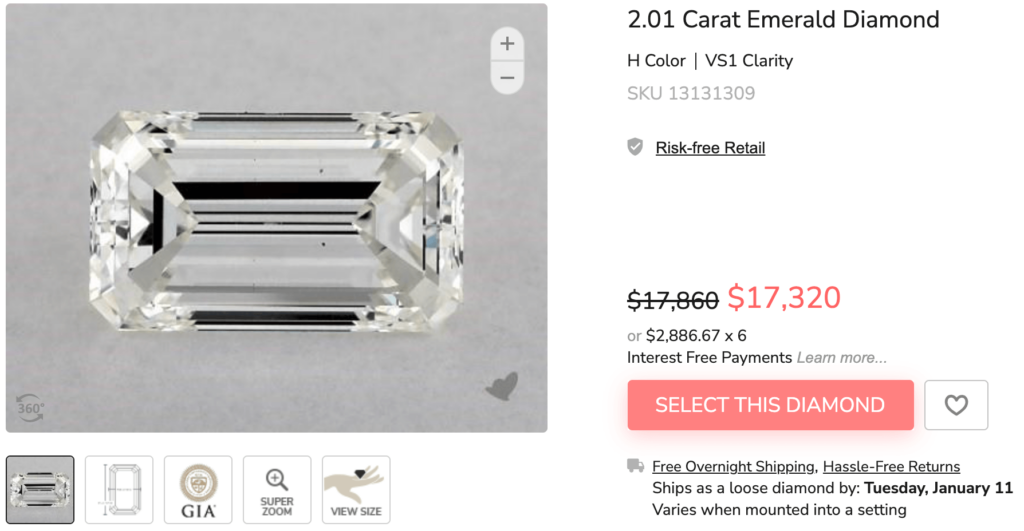
You can also refer to the clarity scale below which outlines all eleven grades (note that AGS only uses eight clarity grades):
Diamond clarity scale
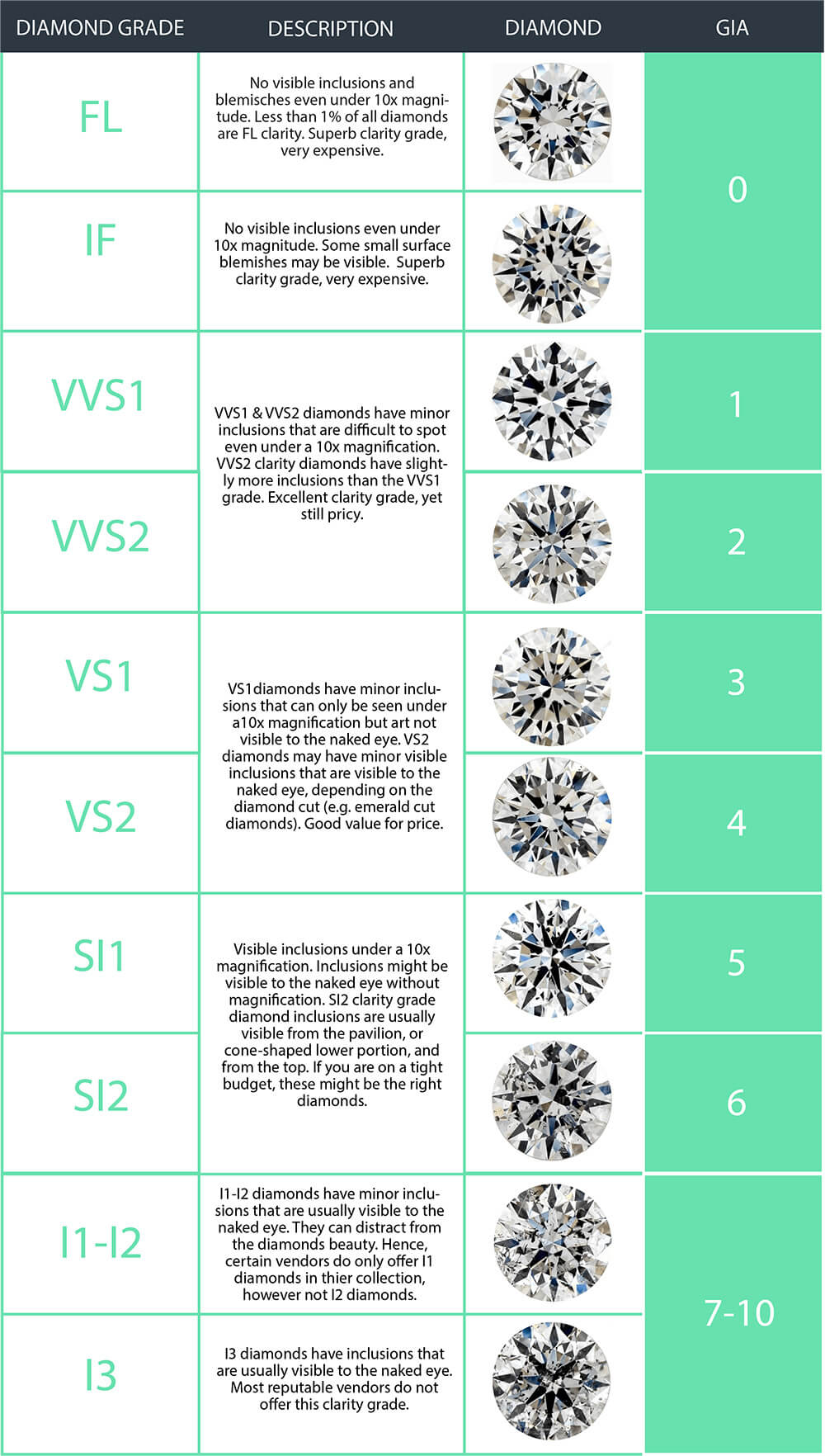
As you can see, the clarity scale ranges from FL or flawless, over internally flawless diamonds to I3 diamonds. You are more likely to get an eye-clean diamond with a higher clarity grade. You run the risk of inclusions visible to the eye with lower clarity grades.
To avoid visible inclusions, it is of uttermost importance that you scan the diamond in detail before purchasing. Below I explain why.
A VS1 clarity diamond is NOT always eye-clean
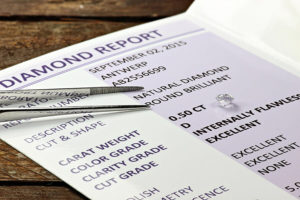
While most VS1 clarity diamonds won’t have visible inclusions, some will. That’s because certain diamond graders will try to give their diamonds higher clarity grades to sell them at a higher price. You want to avoid those jewelers who distribute unreliable grading reports at all costs. What you need instead are skilled graders who are diamond experts.
When you’re shopping for a diamond, how reliable the grading report is will depend on who did it. If a reputable lab like GIA or AGS has given a diamond below 2 carats a clarity grade of VS1, the likelihood that it will be eye-clean is excellent.
You can count on GIA or AGS-graded diamonds to have an accurate report. Do not allow yourself to get scammed by a “really good deal” on a diamond with a questionable certification.
Reputable diamond vendors such as James Allen and Blue Nile always provide a GIA certificate for your diamond.
Furthermore, the two vendors mentioned above are currently the only ones who offer high-quality images and videos of their diamonds, allowing you to scan every detail before purchasing the diamond. With their super Zoom function, you can immediately spot noticeable imperfections.
Should you buy a VS1 clarity diamonds or a VS2 diamond?
Whether you buy a VS1 or VS2 diamond, you will end up with a beautiful stone of excellent value. I can highly recommend VS1 and VS2 diamonds but caution you to make sure they’re eye-clean. You can also find eye-clean SI1 and SI2 diamonds, but it’s critical that you carefully inspect them in person or at least see high-quality photographs.
Unfortunately, people commonly get talked into buying diamonds with such a high clarity grade that they can never fully appreciate. All else being equal, an eye-clean VS1 diamond looks no different than a Flawless diamond. But the VS1 diamond will cost you a lot less money.
Examples of VS1 vs VS2 diamonds
For example, this 0.9-carat round cut diamond has a VS1 clarity grade and an ideal cut with an G color grade and the price is $4,300.
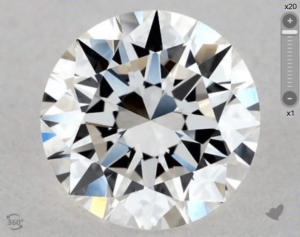
This 0.9-carat round cut diamond has a VVS2 clarity grade with an G color grade, but the price is $4,700.
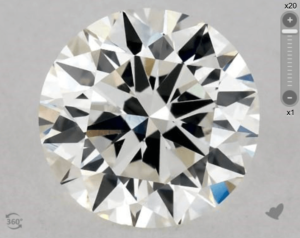
The price of the VVS2 diamond is almost 10% higher than the price of the VS1 clarity diamond. In some cases, the difference can be as high as 20%. There are no visible inclusions or flaws in either diamond, making them eye-clean. But if you choose the VS1 clarity diamond, you end up with just as beautiful a diamond for a much lower price.
I typically recommend that shoppers look at VS1 diamonds if they want a larger stone or are interested in step Emerald cut- or Asscher-cut diamonds.
In terms of clarity, the cut can make a huge difference. For example, if you have a brilliant-cut round diamond, the cut can mask the inclusions. This type of cut makes the diamond sparkle and disperse the light so much that you don’t see the flaws. Therefore, a round diamond shape with a brilliant-cut and a VS clarity grade is an excellent choice for engagement rings.
On the other hand, step cuts usually can’t achieve the incredible optical performance that you get with a round-cut diamond. This is why you can so easily spot inclusions and flaws in step-cut diamonds.
As you start looking at higher carat-size diamonds, inclusions will inevitably become more visible because of the increase in relative facet size.
Smaller-sized VS1 and VS2 diamonds (under 2 carats) will look nearly identical to most people. Only a trained eye comparing the diamonds under magnification could see the difference. So that you can see what they look like in person, watch this video that compares a VS1 with a VS2 diamond ring.
Where to shop for VS1 clarity diamonds & VS2 diamonds
In terms of clarity, you must look at the diamond very closely before deciding whether to buy it or not. You need to see if the stone has any inclusions and flaws with your own eyes.
The only way you can do this if you’re shopping online is to take advantage of vendors that provide high-tech images resulting from high-quality photography.
This is why we can only recommend that you shop with James Allen or Blue Nile for your engagement ring. These are the only vendors that we know of who will show you images of sufficiently high-quality that you can see each diamond’s clarity.
With their advanced technology, you’ll find beautiful diamonds like this SI2 from Blue Nile, which you’ll spend 25% less for than this average VS2 from James Allen or this other one from Blue Nile.
Diamond clarity recommendations for 2.0-carat and larger diamonds
As you start looking at diamonds with a carat weight of 2.0 or greater and larger size diamonds, the likelihood that inclusions and flaws will be easier to see with the naked eye increases.
Some larger sized VS1 and VS2 diamonds may not in fact be eye clean. You can see that this 4.12-carat VS1 clarity diamond has a dark looking inclusion close to the center of its table.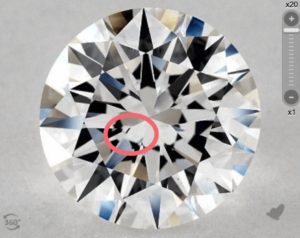
And, this 4.05-carat VS2 diamond has visible surface blemishes.
When you are looking at larger carat-weight diamonds, you should probably look at VVS2 diamonds as well. This is a gorgeous 3.01-carat VVS2 diamond with no visible inclusions or flaws.
[PICTURE]
If you’re only looking at 1-carat diamonds or less, then most diamonds will make for a beautiful center stone (given that the cut quality is high).
As you go up in carat weight, it’s important that you make sure that the diamond is eye clean, that you can’t see any imperfections with your naked eye. The idea is that without looking at the diamond under magnification, you shouldn’t see any inclusions or flaws.
The bottom line
VS1 diamond clarity is a great choice for engagement rings. You might be able to save money if you opt for a lower clarity grade. Especially if you are in the market for a small round cut diamond, you can save money by looking at a lower grade. You can find a seemingly flawless diamond with excellent light performance with a little bit of luck.
In the end, which diamond clarity you choose is up to you! But with the tips from above and the magnification aids from James Allen, you should be able to find a splendid diamond, even if you are in the market for larger stones.
Diamond Quiz
Can you tell the difference?
One of the two diamonds below has a clarity grade of VVS1, the other one of VS1. Can you tell which one has the lower clarity grade and costs $1000 less?

